Are you looking to switch up your cooking routine and try slow cooking? You may be wondering if your trusty rice cooker can double as a slow cooker. The short answer is yes, but with certain adaptations. In this section, we will explore the similarities and differences between rice cookers and slow cookers and provide you with tips on how to use your rice cooker for slow cooking.
Key Takeaways
- It is possible to use a rice cooker for slow cooking with some adjustments.
- Rice cookers and slow cookers have some similarities, but also some key differences.
- Investing in a dedicated slow cooker or a rice cooker slow cooker combo appliance may provide more consistent results.
Rice Cooker vs. Slow Cooker: Understanding the Differences
If you’re wondering whether to use a rice cooker or a slow cooker for slow cooking, it’s important to understand their differences. While both appliances are designed to cook food over a longer period of time, they operate in different ways and have varying functionalities.
A rice cooker is primarily designed for cooking rice, providing consistent and fluffy results every time. It works by heating the liquid in the cooking pot to a boiling point, then reducing the temperature to a simmer until the rice is cooked through.
A slow cooker, on the other hand, is specifically designed for slow cooking. It operates at a lower temperature than a rice cooker and typically has a range of heat settings to choose from. Slow cookers are ideal for tougher cuts of meat, stews, soups, and dishes that require longer cooking times.
While a rice cooker can be adapted for slow cooking, it’s important to note that it may not be as efficient or reliable as a dedicated slow cooker. If you plan to cook slow-cooked meals frequently, investing in a slow cooker may be a more practical option. However, if you already own a rice cooker and want to try slow cooking, it’s possible to achieve satisfying results with the right techniques and adjustments.
Rice Cooker vs. Slow Cooker: Which One Should You Choose for Slow Cooking?
If you’re deciding between buying a rice cooker or a slow cooker for slow cooking, it’s important to consider your specific needs and preferences. If you primarily cook rice and only occasionally cook slow-cooked meals, a rice cooker may be a more practical investment. However, if you frequently prepare slow-cooked meals and want a reliable and efficient appliance, a slow cooker may be a better option.
Another factor to consider is the size of the appliance. Rice cookers come in a wide range of sizes, from small 3-cup models to larger 10-cup models. Slow cookers also come in various sizes, ranging from around 3 quarts to 8 quarts or more. Consider the size of your household and the amount of food you typically cook to ensure you choose an appropriately sized appliance. Additionally, the size of the appliance will also influence the cooking time and the amount of ingredients needed. For example, a smaller rice cooker may cook rice faster than a larger one, and a larger slow cooker may require more ingredients to fill it up and cook properly. It’s also important to consider the type of rice you typically cook, as different rice cookers may have specific brown rice cooking instructions that need to be followed for best results.
Ultimately, the choice between a rice cooker and a slow cooker will depend on your personal preferences and cooking habits. However, understanding the differences between these appliances can help you make an informed decision.
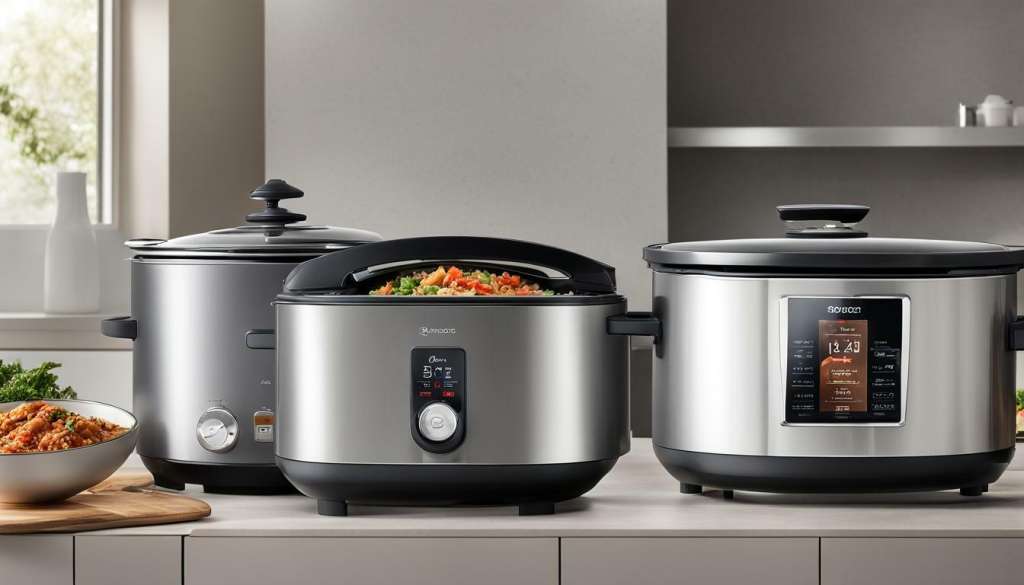
“While a rice cooker can be adapted for slow cooking, it’s important to note that it may not be as efficient or reliable as a dedicated slow cooker.”
Using a Rice Cooker for Slow Cooking: Tips and Tricks
If you want to use your rice cooker for slow cooking, there are a few tips and tricks to keep in mind. While a rice cooker can be a versatile tool in the kitchen, it may require some adjustments for optimal slow-cooking results.
Adjusting Cooking Time
When using a rice cooker for slow cooking, you may need to adjust the cooking time. Slow cooking typically requires a longer cooking time than rice, so it’s important to keep this in mind when preparing your meals. For example, if a recipe calls for 6 hours of slow cooking in a dedicated appliance, it may take longer in a rice cooker.
Prepping Ingredients
Preparing your ingredients properly can also impact your slow cooking results. For example, cutting ingredients into smaller pieces can help them cook more evenly and thoroughly. It’s also important to add the ingredients according to cooking time, starting with those that take longer to cook and adding the quicker-cooking ingredients later on.
Using the Right Setting
Most rice cookers have a slow-cooking setting, but not all do. If your rice cooker doesn’t have a slow-cooking setting, you can still use it for slow cooking by selecting the “warm” or “keep warm” setting. However, you may need to monitor the cooking more closely and adjust the cooking time accordingly.
Experimenting with Recipes
One of the joys of using a rice cooker for slow cooking is the ability to experiment with different recipes and cooking styles. From soups and stews to roasts and casseroles, the possibilities are endless. Don’t be afraid to try new things and adapt your favorite slow-cooking recipes for your rice cooker.
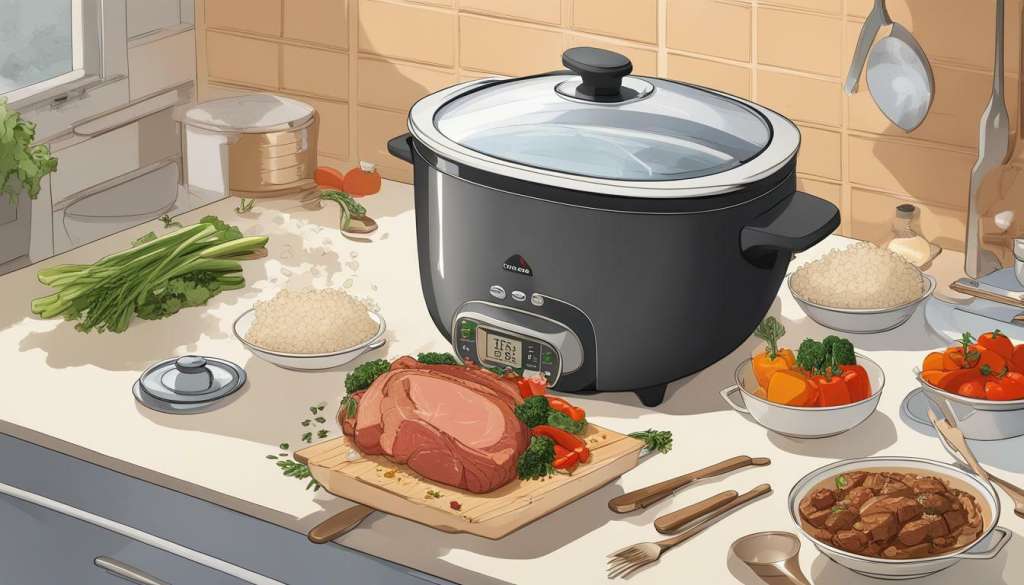
By following these tips and tricks, you can use your rice cooker for slow cooking and achieve delicious, tender, and flavorful meals. However, keep in mind that a dedicated slow cooker or a rice cooker slow cooker combo appliance may offer more reliable and consistent results for your slow-cooked meals.
Converting a Rice Cooker into a Slow Cooker: Is It Possible?
If you’re curious about whether you can convert your rice cooker into a slow cooker, the answer is yes, but it may not be a straightforward process. You may need additional accessories or modifications to achieve the desired slow cooking results.
One potential solution is to purchase a separate slow cooker lid that fits over the top of your rice cooker. This lid typically has a temperature control function and allows for longer cooking times. However, keep in mind that not all rice cookers are compatible with these types of lids, so be sure to check the product specifications before purchasing.
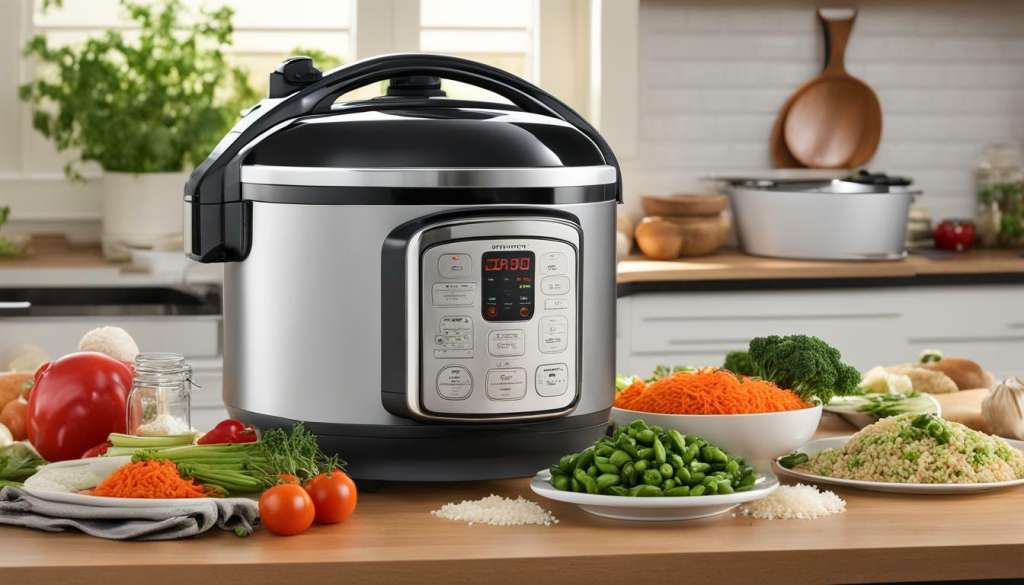
Another option is to use a temperature controller, which allows you to regulate the temperature of your rice cooker. However, this method may require more trial and error to achieve the desired results and may not be as reliable as using a dedicated slow cooker.
It’s worth noting that modifying your rice cooker may void any warranty it came with and may pose safety risks if not done correctly. Always follow the manufacturer’s instructions and exercise caution when attempting to convert your rice cooker into a slow cooker.
Rice Cooker Slow Cooker Combo: The Best of Both Worlds
For those who love both rice and slow-cooked meals, investing in a rice cooker slow cooker combo appliance may be the perfect solution. This versatile appliance can cook rice and slow-cooked dishes with ease, saving time and counter space.
The rice cooker slow cooker combo appliance typically includes features such as multiple cooking modes, automatic shut-off, and a delay timer. Some models even include a steamer basket for added convenience.
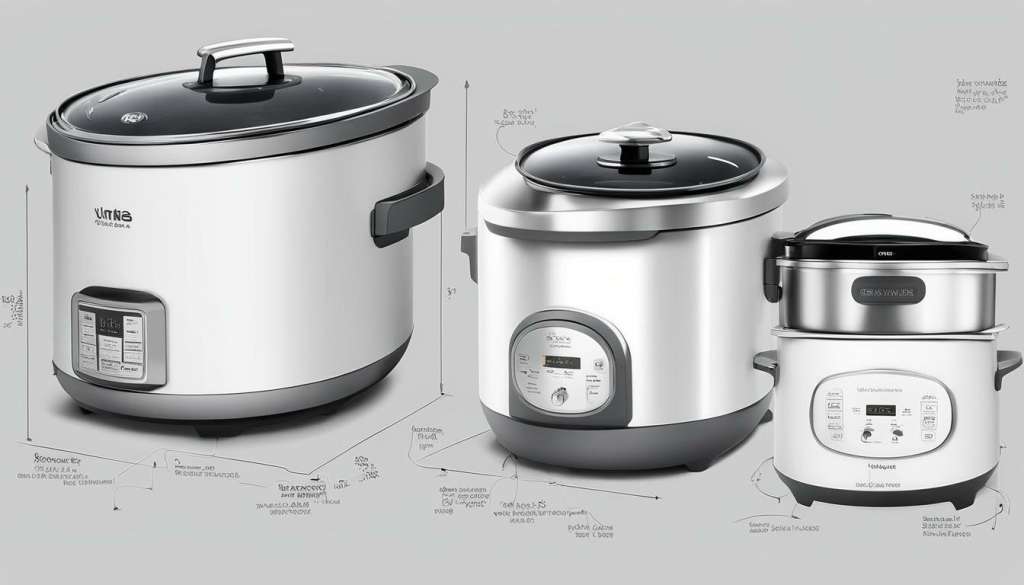
Using a rice cooker slow cooker combo appliance allows you to prepare a wide variety of meals, from fluffy rice to savory stews and tender roasts. You can easily adjust the cooking mode and temperature to suit your recipe, and the automatic shut-off feature ensures that your meal stays warm until you’re ready to serve.
Benefits of a Rice Cooker Slow Cooker Combo
The benefits of a rice cooker slow cooker combo appliance are numerous. First, it saves counter space by combining two appliances in one. Second, it saves time by allowing you to cook rice and a slow-cooked meal at the same time. Third, it typically offers multiple cooking modes, making it a versatile tool in the kitchen.
Features to Look For
When shopping for a rice cooker slow cooker combo appliance, look for features such as multiple cooking modes, automatic shut-off, a delay timer, and a steamer basket. Consider the size of the appliance and make sure it fits your needs and kitchen space.
With a rice cooker slow cooker combo appliance, you can enjoy the best of both worlds, preparing rice and slow-cooked meals with ease. Upgrade your kitchen today and discover the convenience and versatility of this appliance.
Slow-Cooked Meals in a Rice Cooker: What Can You Cook?
Many slow-cooked meals can be prepared using a rice cooker with some adjustments. While traditional slow cookers usually have high and low temperature settings, most rice cookers only have one temperature setting, which is typically used for cooking rice. Slow cooking in a rice cooker requires a longer cooking time than cooking rice, so it’s essential to adjust the cooking time and liquid ratios accordingly.
Here are some examples of slow-cooked meals that can be prepared in a rice cooker:
- Stews and soups: Slow-cooked stews and soups are perfect for a rice cooker, as they require generous liquid ratios and long cooking times to develop their rich flavors. Try a classic beef stew or a comforting chicken noodle soup.
- Casseroles: Rice cookers can also be used to make baked casseroles, such as macaroni and cheese or shepherd’s pie. Simply cook the ingredients as you would in the oven, then switch to the warm setting to keep it heated until it’s time to serve.
- Chili: A hearty chili is another slow-cooked meal that can be made in a rice cooker. Cook the beef or chicken first to brown it and remove any excess fat, then add in the remaining ingredients and let it simmer for several hours.
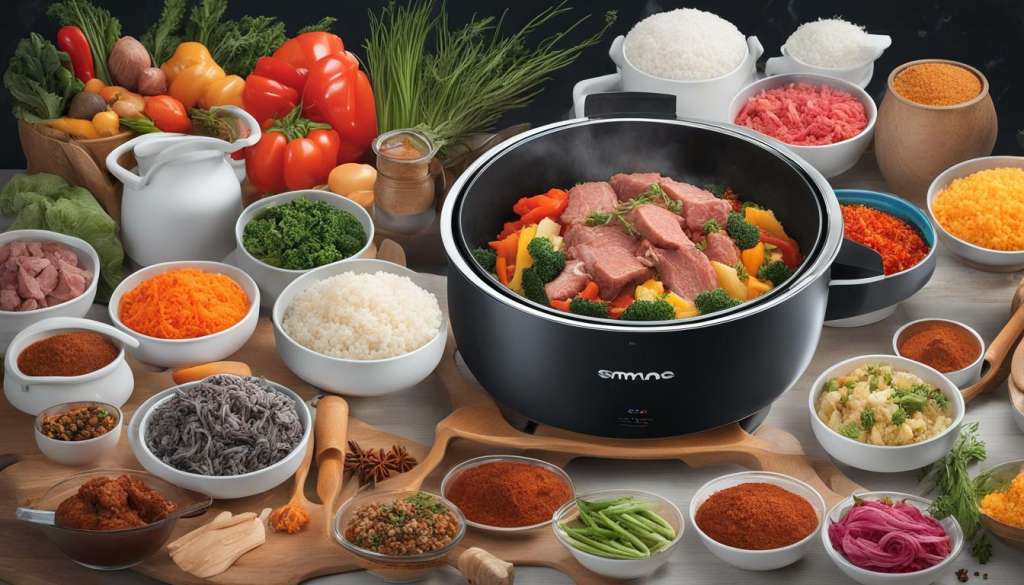
These are just a few ideas of the many slow-cooked meals that can be prepared in a rice cooker. With some creativity and experimentation, you can discover a whole world of slow cooking possibilities.
Tips for Optimal Slow Cooking in a Rice Cooker
If you’ve decided to use your rice cooker for slow cooking, there are a few additional tips and tricks to keep in mind for achieving optimal results.
Prepare your ingredients: As with any slow cooker recipe, it’s important to prepare your ingredients ahead of time. Cut your meats and vegetables into small, uniform pieces to ensure they cook evenly. Layer them in the rice cooker, starting with the tougher, longer-cooking ingredients on the bottom.
Choose the right cooking setting: Most rice cookers have a “slow cook” or “porridge” setting that is suitable for slow cooking. If your rice cooker doesn’t have these settings, use the “warm” or “keep warm” setting instead.
Adjust cooking times: Slow cooking times in a rice cooker may vary depending on the recipe and the size and age of your rice cooker. As a general rule of thumb, you can expect slow cooking in a rice cooker to take 2-3 hours on high or 4-6 hours on low. Check your food periodically and adjust the cooking time as needed.
Do not lift the lid: It’s tempting to check on your food by lifting the lid, but this can disrupt the cooking process and cause heat loss. Only lift the lid if absolutely necessary, such as to stir or add ingredients.
Experiment with flavors: Slow cooking in a rice cooker can produce tender, flavorful meals with minimal effort. Experiment with different spices, herbs, and seasonings to find your favorite combinations. Don’t be afraid to mix and match ingredients to create new and exciting dishes.
If you’re on the hunt for a versatile kitchen appliance that can be used for both rice cooking and slow cooking, consider investing in a rice cooker slow cooker combo appliance. With this 2-in-1 appliance, you can easily switch between rice cooking and slow cooking modes. Not sure where to start? Check out the rice cooker slow cooker combo below.
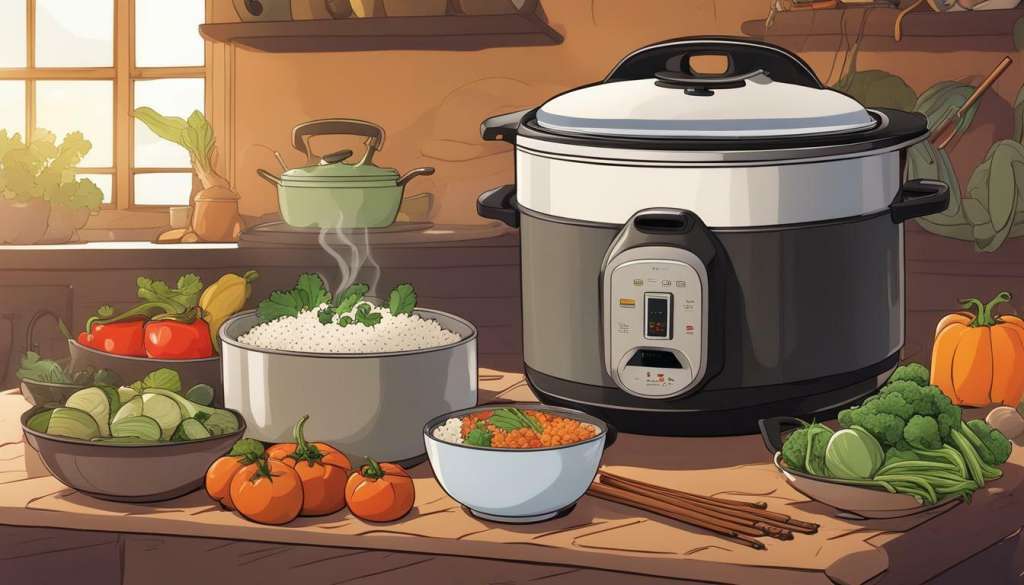
Exploring Other Alternative Uses for Your Rice Cooker
If you thought a rice cooker was only good for cooking rice, think again! With a little creativity, you can use your rice cooker to prepare a variety of dishes and cooking styles beyond traditional rice cooking. Here are some alternative uses for your rice cooker:
- Steaming: Most rice cookers come with a steaming tray that can be used for steaming vegetables, seafood, or dumplings. Simply add water to the rice cooker pot, place the steaming tray on top, and add your ingredients. Close the lid and let it steam until cooked to your liking.
- Quinoa and other grains: Your rice cooker can also be used to cook quinoa, couscous, bulgur, and other grains. Add the grains and water or broth to the pot, close the lid, and select the appropriate setting, which may vary depending on the type of grain.
- One-pot meals: With a rice cooker, you can easily make one-pot meals like soups, stews, and chili. Simply sauté your ingredients in a separate pan, add them to the rice cooker pot with broth or water, and let it cook until the ingredients are tender and the flavors have melded together.
- Cake: Yes, you read that right! You can use your rice cooker to make cake. Simply mix the ingredients according to your favorite cake recipe, pour the batter into the rice cooker pot, and select the appropriate setting. Voila, a perfectly moist and fluffy cake!
These are just a few examples of how you can expand the functionality of your rice cooker beyond simple rice cooking. With a little experimentation, you can discover countless other ways to utilize this versatile appliance in your cooking routine.
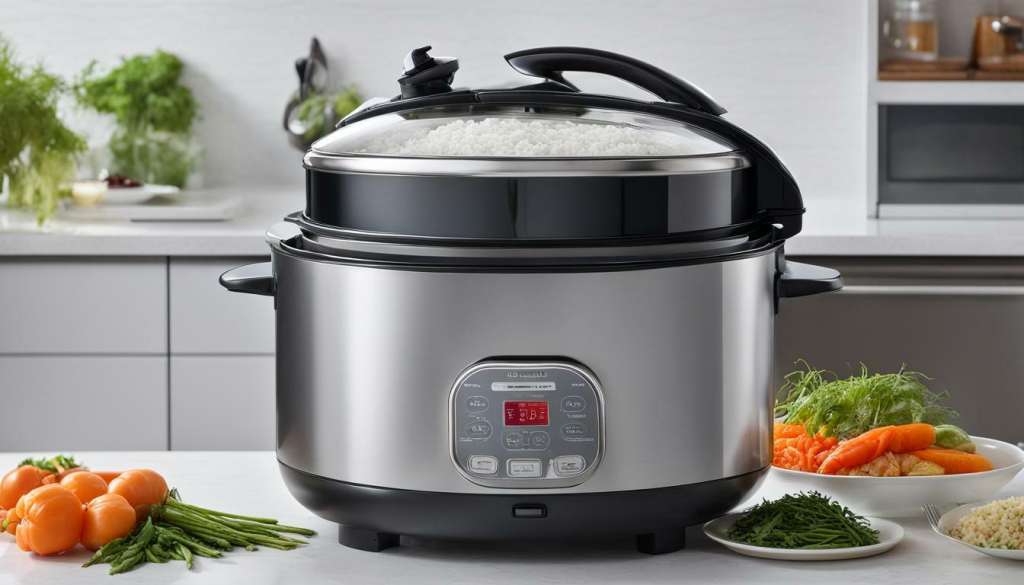
Conclusion
In conclusion, the question of whether you can use a rice cooker as a slow cooker requires careful consideration of the similarities and differences between the two appliances. While a rice cooker can be adapted for slow cooking, it is important to understand the potential limitations and risks involved.
Investing in a dedicated slow cooker or a rice cooker slow cooker combo appliance may offer more reliable and consistent results for your slow-cooked meals. However, with the right techniques and adjustments, a rice cooker can still be a versatile tool in the kitchen, allowing you to explore various cooking styles and expand your culinary repertoire.
Don’t Limit Yourself: Explore Alternative Uses for Your Rice Cooker
Aside from using a rice cooker as a slow cooker, there are other creative ways to make the most of this versatile appliance. Rice cookers can be used for steaming vegetables, cooking grains, making soups, stews, and even desserts.
With a bit of experimentation and ingenuity, you can unlock the full potential of your rice cooker and discover new culinary possibilities. Who knows – you may even create a new favorite dish!
FAQ
Q: Can you use a rice cooker as a slow cooker?
A: Yes, a rice cooker can be used as a slow cooker with certain adaptations.
Q: What are the differences between a rice cooker and a slow cooker?
A: Rice cookers and slow cookers have different functionalities. Rice cookers are designed specifically for cooking rice, while slow cookers are designed for long, slow cooking of various dishes. Slow cookers often have more temperature control options and larger capacities.
Q: How can I use a rice cooker for slow cooking?
A: To use a rice cooker for slow cooking, you may need to adjust the cooking time and temperature settings. It is recommended to use the “keep warm” or “low” setting for slow cooking and monitor the cooking process closely.
Q: Can a rice cooker be converted into a slow cooker?
A: It is possible to convert a rice cooker into a slow cooker with additional accessories or modifications. However, it is important to note that this may void the warranty and pose potential risks or challenges.
Q: What are the benefits of a rice cooker slow cooker combo appliance?
A: A rice cooker slow cooker combo appliance offers the convenience of having both functions in one appliance. It saves space in the kitchen and allows for versatile cooking options, whether you want to cook rice or slow-cooked meals.
Q: What types of slow-cooked meals can be prepared in a rice cooker?
A: You can prepare a variety of slow-cooked meals in a rice cooker, such as soups, stews, chili, pot roast, and even desserts like rice pudding. The possibilities are endless!
Q: Any tips for achieving optimal slow cooking results in a rice cooker?
A: For optimal slow cooking results in a rice cooker, ensure that your ingredients are properly prepared and cut into uniform sizes. Layer ingredients appropriately and avoid lifting the lid frequently to maintain heat and moisture. Follow recipe instructions and adjust cooking times as needed.
Q: Are there any alternative uses for a rice cooker?
A: Yes, a rice cooker can be used for other versatile cooking techniques, such as steaming vegetables, cooking oatmeal, making quinoa, or even baking cakes. Get creative and explore all the possibilities!


